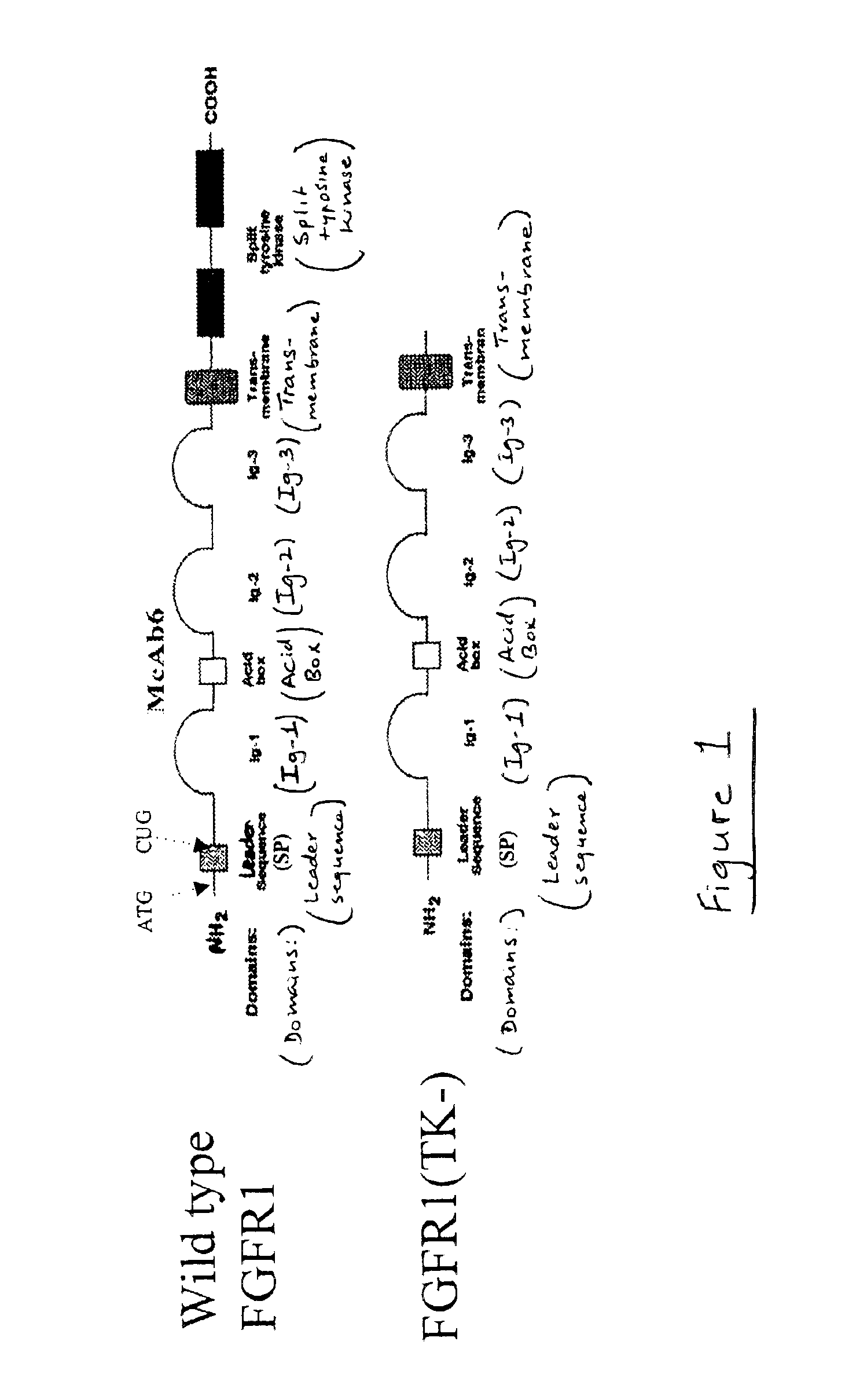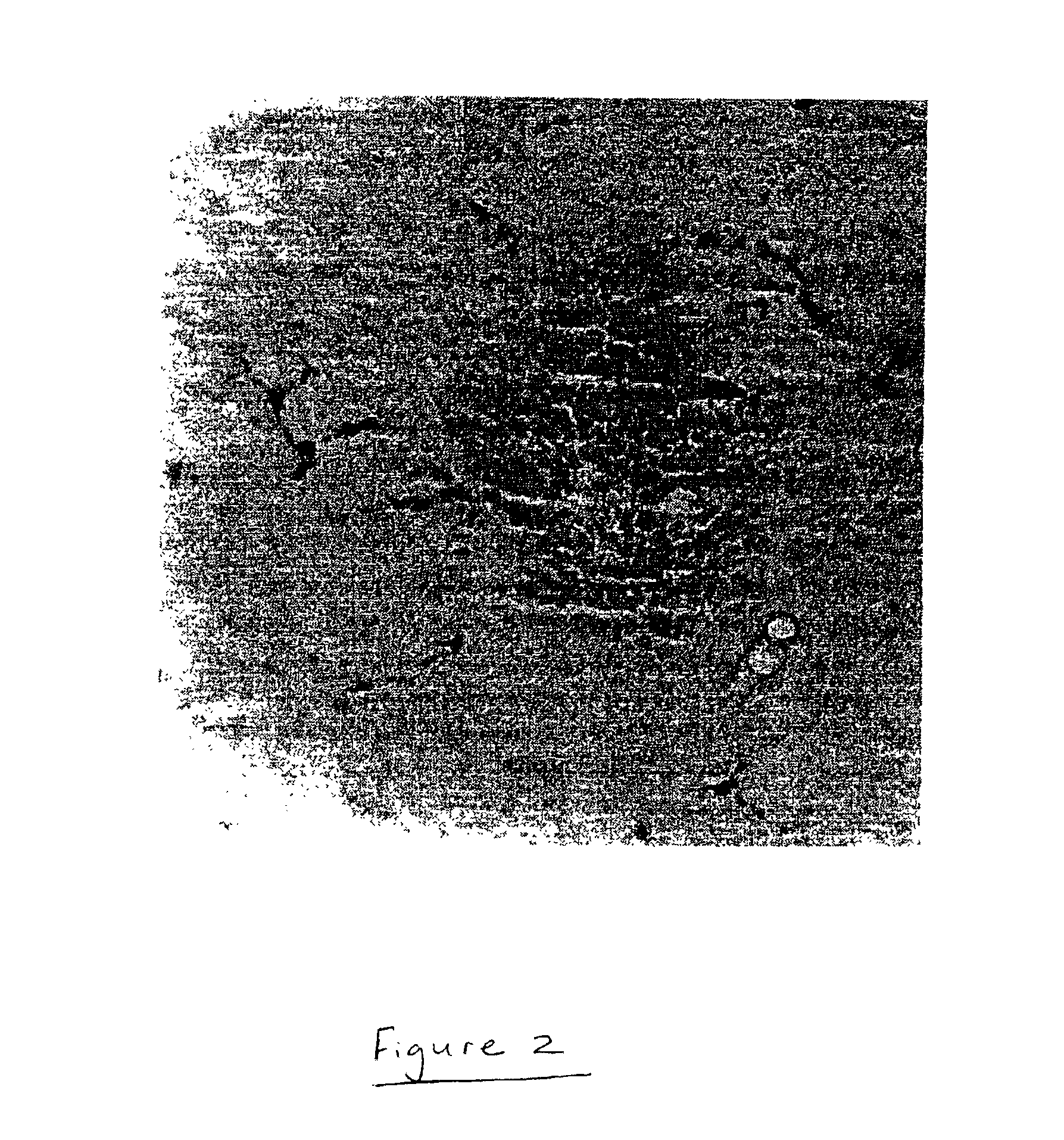Rodent model for Parkinson's Disease
a parkinson's disease and rodent model technology, applied in the field of animal models for parkinson's disease, can solve the problems of slowing down the pace of such routine activities, making other movements more difficult, and older patients facing their greatest challenges, and achieve the effect of reducing the number of tyrosine hydroxylase (th)-expressing neurons
- Summary
- Abstract
- Description
- Claims
- Application Information
AI Technical Summary
Benefits of technology
Problems solved by technology
Method used
Image
Examples
example 1
This embodiment describes the injection of a TK deficient mutant of FGF1 into the SN of rats. The preparation and characteristics of this mutant are described in Peng et al. (Mol. Biol. Cell, 2001, 12:449-462, incorporated herein by reference). To illustrate this embodiment, a freshly prepared mixture of DNA construct with a final DNA concentration of about 0.4 μg / μl and linear 22 kDa PEI dissolved in 5% glucose is stereotaxically injected into SNc of anesthetized male Sprague-Dawley rats at a rate of 0.5 ml / min. The injection can be carried out into either the left or right SNc using stereotaxic coordinates: AP: −5.60 mm, ML: + / −1.5 mm., and DV: −8.2 mm. It was found that the most efficient transfection and longest-lasting expression (at least 2 months) were achieved by injecting SNc with 4 ml containing 1.5-3.0 mg of plasmid DNA and 6 PEI equivalents of DNA (one equivalence=amount of PEI required to neutralize the negative charges of DNA phosphate groups).
Plasmids expressing β-gal...
example 2
To monitor the expression of the DNA constructs used to transfect cells, FGFR1[TK-] / βgal-transfected animals are anesthetized and perfused first with isotonic PBS (pH 7.2) then 4% paraformaldehyde fixative. Brains are removed, cryoprotected with 30% sucrose at 4° C., and then using a freezing stage microtome and systematically saving all sections are cut at about 5 mm thickness. Sections encompassing the SN can be immunostained for the human cMyc epitope (since the recombinant FGFR1 constructs have a C-terminal cMyc tag). Further, β-gal expression can be detected in alternative sections using anti-β-galactosidase Ab. The extent of cDNA transfection and expression can be determined using PCR (for DNA) and RT-PCR (for RNA). At each time point after transfection with FGFR1[TK-] / βgal, rats can be euthanized, the brains removed and the DNA and RNA extracted from dissected SN by grinding the tissue in 0.5 ml of Trizol TM. The DNA fraction can be used to determine the amount of transfected...
PUM
| Property | Measurement | Unit |
|---|---|---|
| time | aaaaa | aaaaa |
| concentration | aaaaa | aaaaa |
| pH | aaaaa | aaaaa |
Abstract
Description
Claims
Application Information
 Login to View More
Login to View More - R&D
- Intellectual Property
- Life Sciences
- Materials
- Tech Scout
- Unparalleled Data Quality
- Higher Quality Content
- 60% Fewer Hallucinations
Browse by: Latest US Patents, China's latest patents, Technical Efficacy Thesaurus, Application Domain, Technology Topic, Popular Technical Reports.
© 2025 PatSnap. All rights reserved.Legal|Privacy policy|Modern Slavery Act Transparency Statement|Sitemap|About US| Contact US: help@patsnap.com



